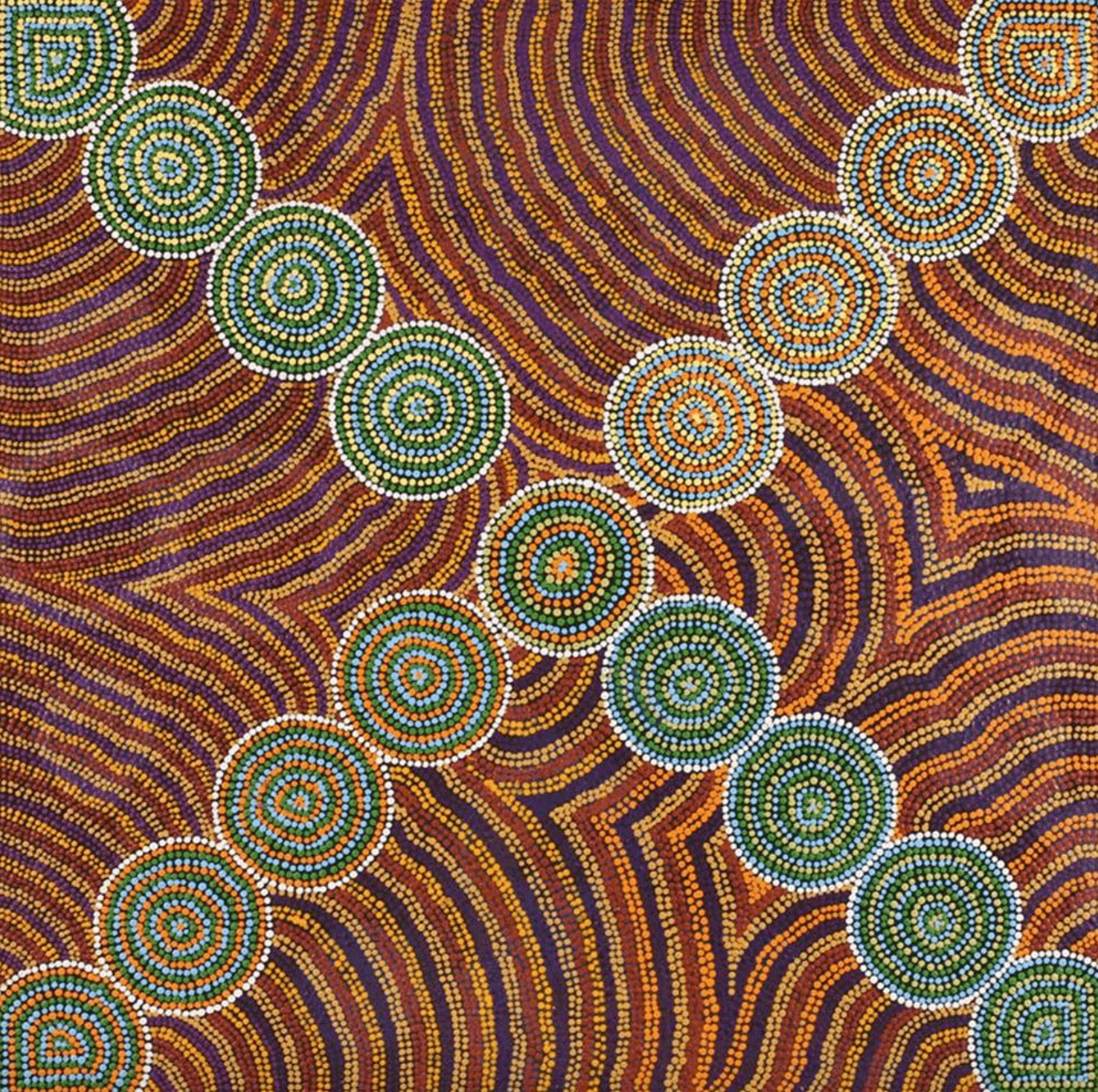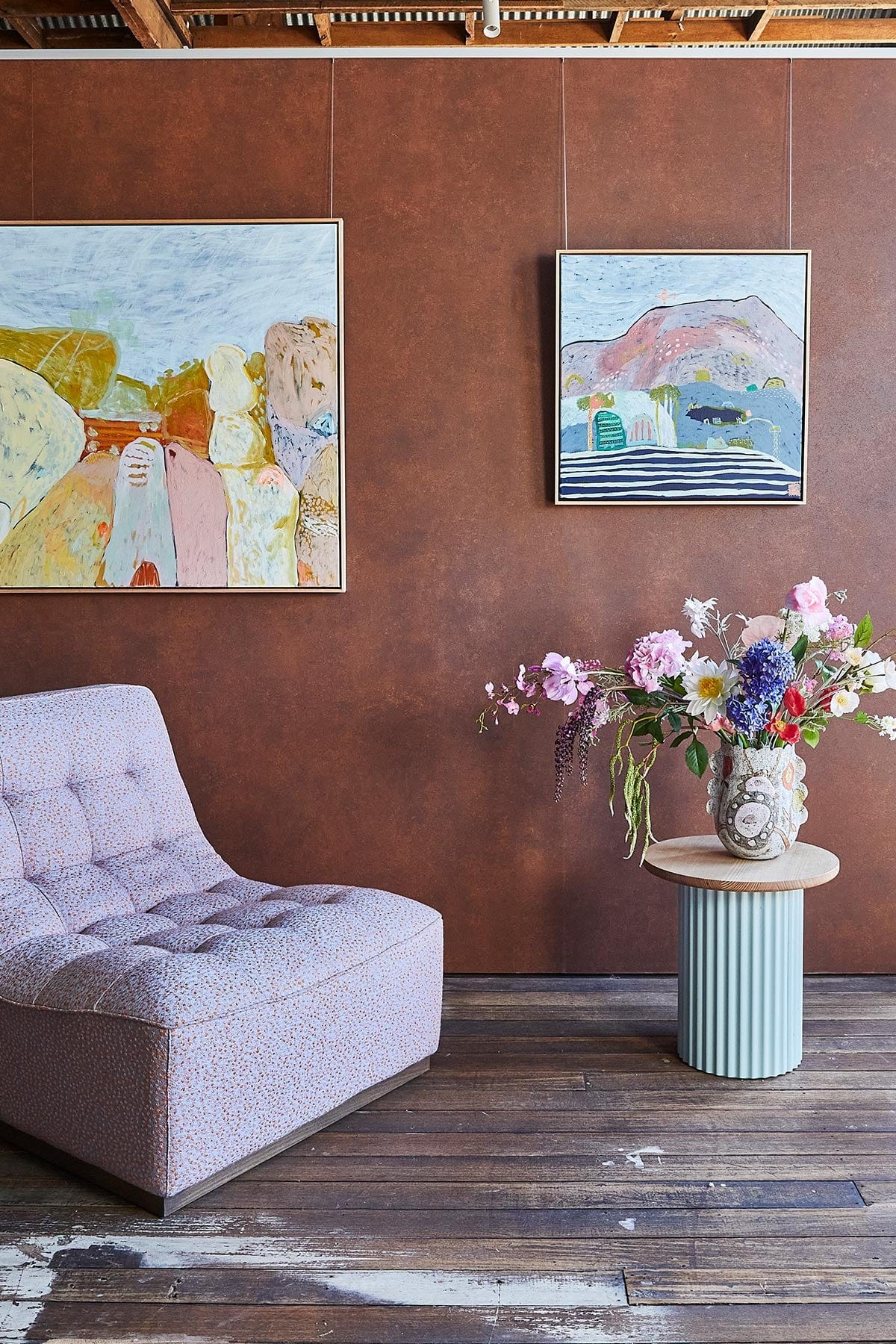
Lukarrara Jukurrpa (Desert Fringe-rush Seed Dreaming) - Original Art
Pickup currently not available
Details
This is an original artwork by artist - Melinda Napurrurla Wilson, a member of the Warlukurlangu Artists Aboriginal Corporation.
Additional canvas around the edge of the painting allows for stretching.
Artwork measures - 76 x 76 cm
This original artwork is unframed and shipped rolled up to your door! We have very competitive framing options on our site - see tab below to get a free online quote.
A stamped certificate of authenticity is supplied by Warlukurlangu Artists Aboriginal Corporation with this artwork.
Warlukurlangu Artists is famous for its gloriously colourful acrylic paintings and limited edition prints. The Aboriginal art centre has a national and international profile and its art has been featured in hundreds of exhibitions and publications in Australia and around the world. Warlukurlangu means ‘belonging to fire’ in the local language, Warlpiri, and is named for a fire dreaming site west of Yuendumu.
Established in 1985 Warlukurlangu Artists Aboriginal Corporation is a not-for-profit organisation that is 100% Aboriginal-owned by its artists from the remote desert communities of Yuendumu and Nyirripi in Central Australia. Proceeds from the sale of all art go directly back to the artists and their community projects. Warlukurlangu Artists is supported by funding from the Australian Government through the Indigenous Visual Arts Industry Support.
Free shipping in Australia
STORY:
This Jukurrpa belongs to women of the Nakamarra/Napurrurla subsections and to Jakamarra/Jupurrurla men. This Dreaming is associated with a place called Jaralypari, north of Yuendumu. Lukarrara (desert fringe-rush [Fimbristylis oxystachya & Fimbristylis eremophila]) is a grass with an edible seed. The seeds are traditionally ground on a large stone (‘ngatinyanu’) with a smaller stone (‘ngalikirri’) to make flour. This flour is mixed with water (‘ngapa’) to make damper cakes which are cooked and eaten. In Warlpiri traditional paintings iconography is used to represent the Jukurrpa, particular sites and other elements. Large concentric circles often represent the site of Jaralypari and also the seed bearing grass Lukurrara. ‘U’ shapes can depict the Karnta (women) collecting ‘lukarrara’ and straight lines are frequently used to portray seeds that fall down to the ground and are also collected by women using their ‘parrajas’ (wooden food carriers) and ‘karlangu’ (digging sticks).
Shipping
SHARE THIS PRODUCT
You might also like...

LIFE IS BETTER WITH COLOUR
Trusted Brand Since 2012
- Specialist curator of emerging artisans, since 2012
- Over 70 Australian and international artists
- Exclusive collections
- Shop online or visit our Showroom & Gallery
- 14 day return policy*
- 24x7 support, including humans
- FREE 3D app to see art on your walls
- 5 star rating
- 100% Greenhouse Art Guarantee

Free Art Advisory
Lost in the search? Let our free art advisory cut through the noise and lead you to your next masterpiece—one that feels like home. Click on the button below to get started.

